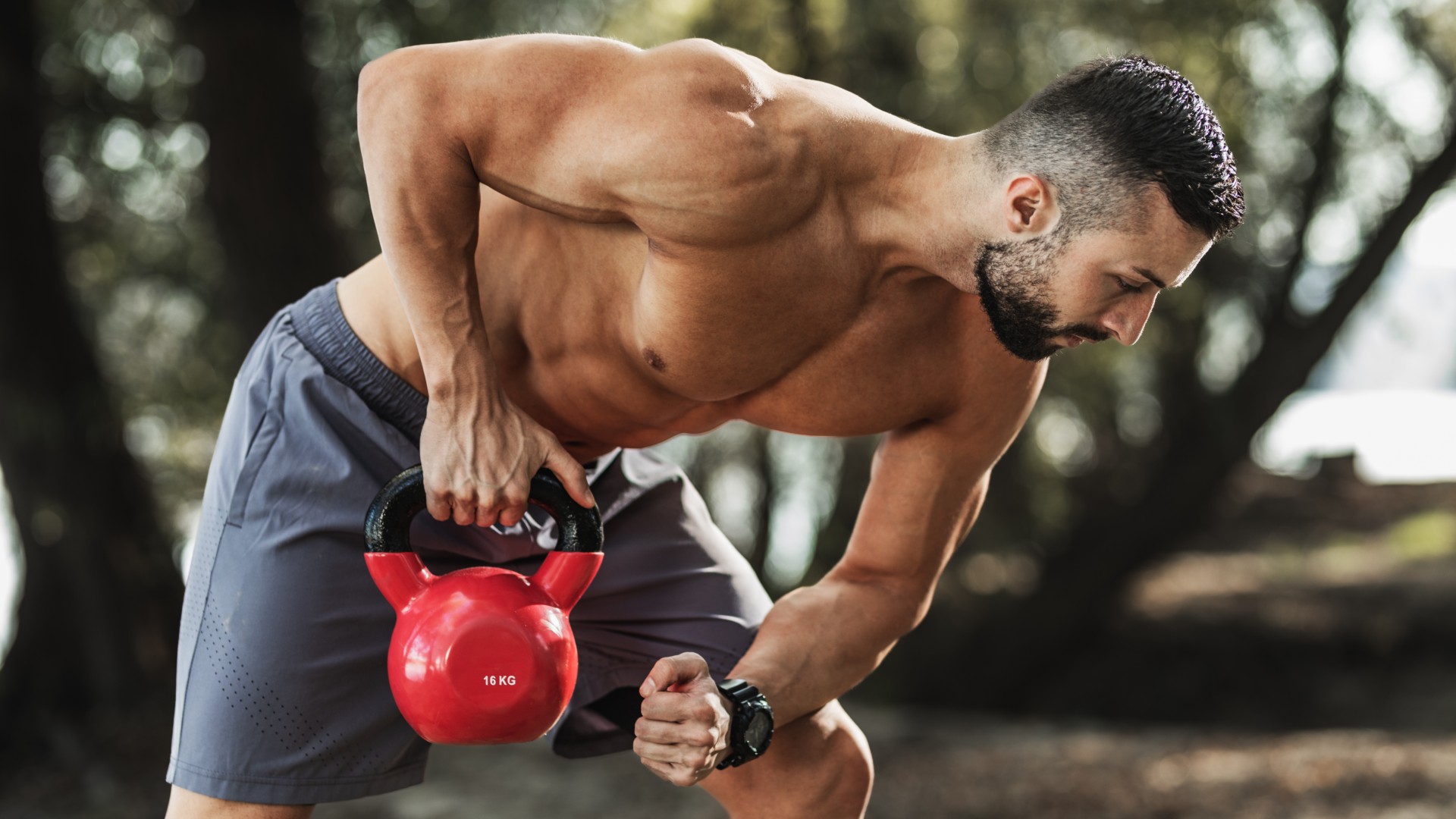I teach weightlifting for a living — 3 kettlebell moves to unlock strength, power and muscle endurance for beginners

The kettlebell shouldn’t be feared — it’s a brilliant strength and conditioning tool that allows you to unlock explosive power, strength, and endurance, whatever your workout style or ability.
They free up your range of motion, boost mobility, strengthen your core muscles, and even increase stability. What’s not to love?
I teach weightlifting for a living when I’m not at my desk writing about all things fitness, so I’ve worked with kettlebells for years. There are plenty of exercises I’d program for all levels, including kettlebell beginners.
However, the best kettlebells deserve the best routines to do them justice (yes, I’m a kettlebell nerd), so I'm quite selective with what I program.
You can tick off strength, power, and endurance benefits by using these three kettlebell exercises in your workout routine — here’s how to do them, and why.
What are the 3 kettlebell exercises?
Traveling kettlebell squat hold
For this, you’ll need to learn how to hold a kettlebell properly. The goblet hold means using a cupping motion with both hands to grip the bell at your chest.
From here, perform a squat, sitting your hips back and bending your knees as if taking a seat on a chair. When your thighs reach roughly parallel to the floor, hold the position.
Get instant access to breaking news, the hottest reviews, great deals and helpful tips.
Here’s where the traveling comes in: step one foot forward, landing heel first, then toes. Then step your other foot forward, continuing to walk forward while staying in a low hold.
Your chest should stay proud and your back straight to avoid hunching over, as this will propel your weight forward and send you to the floor.
This is one for the quads, glutes, hamstrings, and core muscles. The low hold creates tension in your lower body while your upper body works to grip the kettlebell at your chest, and your core tries to keep your torso stable.
Walking requires balance, coordination, and stability, making it the perfect exercise for developing endurance.
Two-handed kettlebell clean and squat
I find beginners prefer learning the two-handed clean, as there’s more than one way to clean a kettlebell depending on the exercise or technique you prefer.
For this variation, start with a kettlebell between your feet and stand with your feet shoulder-width apart. Bend your knees slightly, hinge forward, then grip the kettlebell horn using both hands and an overhand grip. Keep your chest proud and back straight, and ensure your stomach is engaged.
Next, as you stand, pull the kettlebell upward, allowing your elbows to lift outward as the kettlebell travels in a straight line close to the body.
Briefly release the kettlebell, then catch the bell with both hands and move straight into a squat. Pause at the bottom, then drive up through both feet to stand straight. Reset every rep.
Say hello to explosive power.
Single-arm eccentric kettlebell squat
Lastly, let’s focus on stability and strength. One of the most beneficial ways you can exercise when strength training is using unilateral movements — single-sided exercises. Think single-leg or single-arm.
Loading one side of the body creates instability, challenging your balance and stabilizer muscles, particularly your core, to prevent you from falling.
Eccentric loading has been shown by research to be one of the best ways to build strength, muscle, and control. It means increasing tension or resistance on the muscles as they lengthen rather than shorten — think the lowering phase of a push-up or squat, or as you raise your arms during a lat pull-down.
For this last exercise, you’ll start with one kettlebell racked up to your shoulder in the front rack position, elbow lifted high to create a shelf. Next, perform a squat, lowering slowly for the count of four.
Pause at the bottom, then drive up to stand with power. This slow, controlled movement on the descent will work your legs hard and test your ability to control your body and the load on one side.
Once you’re familiar with each exercise, try 3-4 sets of 8-12 reps, resting for roughly 30 seconds between sets and 60 seconds between exercises.
More from Tom's Guide
- 5 best ways to build muscle without lifting heavier weights
- Forget running and swimming — study finds this sport adds 10 years to your life
- I'm a personal trainer and train with weightlifting beginners — these are the 3 kettlebell exercises I always teach them

Sam Hopes is a level 3 qualified trainer, a level 2 Reiki practitioner and fitness editor at Tom's Guide. She is also currently undertaking her Yoga For Athletes training course.
Sam has written for various fitness brands and websites over the years and has experience across brands at Future, such as Live Science, Fit&Well, Coach, and T3.
Having coached at fitness studios like F45 and Virgin Active and personal trained, Sam now primarily teaches outdoor bootcamps, bodyweight, calisthenics and kettlebells.
She also coaches mobility and flexibility classes several times a week and believes that true strength comes from a holistic approach to training your body.
Sam has completed two mixed doubles Hyrox competitions in London and the Netherlands and finished her first doubles attempt in 1:11.
You must confirm your public display name before commenting
Please logout and then login again, you will then be prompted to enter your display name.


